From Berat to Shkodër, passing Durrës and Tirana, Albania
The road toward Tirana via Durrës
Short Description. I came back to the Adriatic Sea via Durrës, where I visited the ancient fortifications and the Roman amphitheater, then the insalubrious seafront. In the evening, I arrived at Alaattin’s house in Tirana.
Long Description
I drove from the campground near Berat to the Adriatic Sea, to Durrës. Located on the outskirts of the city, the beach area was bordered by new, modern buildings painted in bright colors, with balconies overlooking the sea and numerous terraces at their ground floor. A line of palm trees flanked the main seafront promenade. Everywhere it was a holiday feel, especially since all the Albanians from Tirana came to the seaside for a day-trip.
In Durrës, I parked the car in the city center, after passing the harbor. I drank my daily frappe at a bar across the seafront, then headed toward the Venetian Tower – one of the few ancient remnants preserved from the old fortress. Several terraces lined along the old wall, as well as a lush green park dotted with white and pink oleanders. I entered one of the fortress’s gates right in front of the old amphitheater. The Roman ruins were quite large but horribly restored (pieces of plexiglass and underground insalubrious areas). Some of the neighboring houses had been built on the southern side of the amphitheater, including a Christian basilica with mosaics. The amphitheater’s rows of stone seats had been consolidated with poured mortar, so they had a fairly steep slope.
From the Roman amphitheater, I went to the central square, dominated by a large mosque, palm trees, and an artesian fountain in which Gypsies were bathing. I headed back toward the harbor along the main shopping street, lined with cafes and restaurants. At one point, I stopped at a pizzeria where the waiter also had the role to banish the gypsy beggars. I would have liked to take a swim in the sea, but the downtown’s beach was horrible, dirty, and almost nonexistent. I found, though, some modern wooden canopies along the seafront, the perfect place to have a good siesta.
After lunch, I headed toward Tirana and enjoyed the first, real highway in Albania. However, the road between Tirana and Durrës was rather a conurbation – two traffic lanes and lots of shops on both sides. In the Albanian capital, I couldn’t find Alaattin’s house on the GPS. Many streets were being rehabilitated, so I had a hard time getting to Alaattin’s neighborhood. He came and picked me up from a nearby landmark, and thus I finally walked inside a real house after more than one month of traveling. In the evening, we went to an Italian restaurant where we could choose from no less than 90 kinds of pasta.
One day in Tirana
Short Description. In the morning, I passed hundreds of Albanians drinking coffee in the Blloku District. Then, I crossed Mother Theresa’s Square and the terrible Pyramid of Tirana. I fathomed the mysterious history of Communism at Bunk’Art Museum and came back to Alaattin’s house.
Long Description
I drank coffee with Alaattin on the balcony of his apartment. He explained to me where to go and what to see in the city center. Tirana was also called the “city of the 3000 cafes“. In the morning, everybody was out for a coffee, while at lunch and during the afternoons (when it was very hot), everything seemed deserted. In the evening, the cafes were again crowded with people. Thus, I witnessed the culture of cafés. All Albanians, regardless their age, socialized in the morning and evening while drinking their coffee. The streets of the Blloku neighborhood (the neighborhood where the communist dictator Enver Hoxha had lived) had plenty of greenery, bushy trees casting a shadow on the ground floor shops, and featured typical communist facades all along the streets.
I crossed Mother Theresa’s Square and walked along the main boulevard with imposing buildings. Then, I passed the famous Pyramid of Tirana, a former museum dedicated to Enver Hoxha, but terrible preserved in an advanced state of decay. On the other side of the street, a few bunkers painted with graffiti were scattered throughout a small park. Even though pretty ugly, it had been impossible to destroy them. The engineer who had designed them would have stayed inside one while a military tank had passed above it and he had survived.
The central square of Tirana would have had grass once. When I visited Tirana, though, it had a huge pavement that felt like an oven in the middle of the summer. Nearby, Bunk’Art housed the museum of communism, set up in a former underground concrete bunker. The bunker had been directly linked to the Foreign Ministry at the underground floor. It had the role to withstand a potential chemical or nuclear attack against Albania. Neither the Foreign Minister nor the former dictator Enver Hoxha had ever seen the works completed before they died. Therefore, the bunker had never been used. It could have been accessed only from the Foreign Ministry. Later, the museum’s entrance/exit were built for opening the exhibition. The museum was designed in a modern, minimalist style, with over 30 rooms filled with informative panels about communism in Albania (very similar to the one in Romania).
In the evening, I discussed with Alaattin about the similarities between the Romanian and Turkish dances and music.
From Tirana to Shkodër, passing through Krujë
Short description. After I left Tirana, I stopped at the castle in Preze, then at Camping Tirana, where I witnessed the brandy and tobacco production. The following day, I visited Krujë en route to Shkodër.
Long description
Alaattin sent me to his dentist, Jakup Vrioni. The doctor asked me to come at the French Hospital, on a far-off side of Tirana. The staff from the hospital didn’t accept me without a good recommendation or an appointment. I called Alaattin, Alaattin called the doctor, the doctor came out of his cabinet and suddenly he solved the problem. He examined my broken tooth. As a reward, he sent me to his private cabinet, on another far-off side of Tirana. He explained to me he couldn’t do fillings at the hospital. Arela, a recent graduate from stomatology, patiently worked in my mouth for half an hour and filled the caries of the old tooth.
The traffic in Tirana challenged all my driving skills. I had to pay attention to the GPS, but sometimes I didn’t have to listen to it, especially when I got stuck in dead-ends. Albanians hadn’t been allowed to own personal cars until the abolition of communism in the 1990s. Therefore, they had a short driving history (15 years or so), randomly and chaotic. For the same reason, the roads throughout the country were terrible or simply off-roads. The local people could compensate this, though, buying jeeps with high suspensions.
I left Tirana and intended to stop at a campground with a swimming pool near the town of Krujë. The campground was very pricey, though. The young girl from the front desk seemed annoyed whenever I kindly asked her to explain to me how she calculated that enormous price. Eventually, she offered me a fabulous discount of 2 euros, but the price was still similar to the one of a hotel room. Obviously, I left the place and stopped for a short break at Prezë Castle. The ruined castle sat on a steep hilltop at the end of a countryside road. It had an old mosque, well-preserved fortification walls, an empty restaurant, and a terrace where I enjoyed a relaxing coffee while admiring the valley.
I reconsidered all the accommodation options and turned back toward Tirana. I planned to go to Camping Tirana, amazingly situated on a hillside, with a view and access to a peaceful lake. On my way there, I briefly stopped at the City Mall on the outskirts of the capital and ate souvlaki. Then, I followed a decent off-road to the campground. In the campground’s garden, frogs croaked all around. I descended to the lake, where I sunbathed and swam until the evening. Czechs, Germans, and Polish kept coming to the campground to spend the night there. The owners of the campground offered me rakija and tobacco, but I refused both of them.
Before leaving Camping Tirana the following day, Rita showed me the place where she made rakija and the tobacco production of her parents-in-law. For brandy – rakija (52% alcohol). She put the grapes to distillate in barrels for 11 days. Then, she moved them into a smaller one, a boiler placed on the fire, while hermetically sealed with bread and water (flour and water) at its joints. She put cold water in a box through which the pipes with rakija passed. Otherwise, the brandy would have color and wouldn’t be so pure. At the end of the pipes, where the rakija came out, she put a piece of cotton as a filter for impurities. Then she stored the rakija in bottles.
For tobacco. The household behind the campground had a small tobacco plantation. The tobacco had large leaves, which must be harvested only early in the morning until the sun dried them. After picking up the tobacco leaves, her mother-in-law gathered them in a pile in the middle of the courtyard, then strung and hung them in a greenhouse. After one week, the dried leaves were taken to a special tobacco machine in the village, where they were cut into small pieces. They had a low and cheap production of tobacco: 1 kg – 10 euros, although only 100 grams of tobacco cost so much in Europe.
On my way to Krujë, a red light designating an exclamation mark started to blink on the dashboard of my car. It soon turned off, but it reactivated after the engine heated up and showed +46C degrees on board. In Krujë, I parked at the foot of the castle, in a parking lot in full sun. The castle in Krujë was small, questionably restored, and organized on a fairly steep terrain. In the lower part, the fortress comprised a museum, a former hammam, a teke, and several old houses. In the upper part, it included Ottoman stylish houses, refurbished as guesthouses with restaurants and terraces, the ruins of a church, and the modern Skanderbeg Museum.
In the lower fortress, the Ethnographic Museum was refurbished in an old stone house. It displayed pottery, instruments for making rakija alcoholic drink, woolen knitted objects, the grooms’ room, and traditional clothing. Next to it, I glimpsed a former hammam and, a bit further, a teke (a monastery belonging to the Bektashi branch of Islam, set up in a former Byzantine church). A few alleyways brought me to the upper part of the fortress, dominated by restaurants with shaded terraces. Most of the houses in the fortress (not many, just four or five) housed restaurants with accommodation, overlooking a dramatic valley with three stunning lakes.
At Emiliani Guesthouse, a young boy showed me the former defense tower and the ruins of a Catholic church, with small pale frescoes and a terrible metallic structure for protection. He insisted on inviting me to his restaurant, beautifully arranged between the fortress walls and his traditional house made of stone. Every corner was used to the maximum and furnished with minimalist furniture. I didn’t like the menu there, so I kindly told him I didn’t want to order something. He insisted, though, and threatened me to delete the photos I had taken on their property.
At the Merlika Guesthouse, the owner welcomed me like a queen in the Ottoman salon of the old house. There, I had my lunch (spinach soup with tomatoes, peppers stuffed with cheese and baked in a ceramic pot) and I drank the coffee in front of the old Ottoman stove. I could have camped there, in his garden, but I had already made plans to go to Shkodër as soon as possible.
Before leaving Krujë, I went to the Skanderbeg Museum. Skanderbeg was Albania’s national hero, who turned against the Turks and saved the nation. Hoxha’s daughter, who was an architect, built this museum dedicated to Skanderbeg. The building stood pretty well in the surrounding scenery, a bit gigantic, though, and with a communist interior design. I then descended from the fortress and strolled through the Turkish bazaar, tiny but very touristy, too. Women worked the looms in order to make you buy their handmade carpets. However, they didn’t allow taking pictures of them unless you bought something. Although a Turkish bazaar, it lacked authenticity. The shop owners sold 20 years old jewelry, sunglasses, and woolen socks.
In the evening, I arrived in Shkodër and went to Camping Ledgenda, near the lake with the same name. A family business, the campground had a swimming pool, apple trees, and a stylish restaurant. The father was a painter, the mother an English teacher, and their two daughters were on vacation, but helping their parents. After I found a good place to park my car, I met Arditt (my couchsurfing connection), we drank some juice together and made a plan for the following days.
A few days in Shkodër
Short description. In one day, I went with Arditt to Mesi Bridge and Kiri Canyons at the foot of the mountains. The other day, I climbed to the Rozafa Citadel, which dominated the town from the top of a pointed hill. In the afternoon, I strolled through the animated downtown of Shkodër.
Long Description
The music in Camping Ledgenda was pretty loud during the previous night. Early morning, the shining sun literally forced me to get out of the car. I desperately checked the dashboard of my car but it didn’t have the red light turned on anymore. I went to the swimming pool of the campground, then I had lasagna at the camping’s shady restaurant.
After lunch, I picked Arditt from the city center and headed to Mesi Bridge, an Ottoman bridge well preserved in a village at the foot of the Albanian Alps. Two young spouses took wedding pictures on the old bridge, with a dramatic mountainous backdrop behind them. At that point of the valley, the river dried up but upstream it flowed abundantly through the Kiri Canyons.
Locals came to swim in the Kiri Canyons, natural rock pools with deep water. Only young boys had come there. I could hardly see a girl among them. They jump off the high cliffs and had lots of fun. In the azure water, perfect for a swim, I noticed a snake that stayed in a fixed place of the canyon. I would have liked to swim through the narrow place but the presence of the snake disgusted me and I stayed away from that spot. Meanwhile, Arditt met a lot of his friends there and they showed me the best spots for sunbathing and swimming.
The following day in Shkodër, I enjoyed sunbathing at the swimming pool the entire morning. At lunch, I went for my daily frappe in the shady garden of Ledjenda’s restaurant. In the afternoon, I climbed to the ruins of the Rozafa Citadel, located on top of the hill that dominated the entire city. I parked the car on a steep street in full sun and explored the three inner courtyards of the fortress. The small one was actually the original fortress (including the Shkodër Museum), later extended with two other concentric courtyards built in the Middle Ages and in the Ottoman period. When I got back to the car, the dashboard showed me +49 degrees!
In the afternoon, I strolled the center of Shkodër, which had a picturesque pedestrian street and numerous 19th-century houses with restaurants on the ground floor. However, they served food only in the evening. I had a hard time finding the San Francisco restaurant, open at that hour. Eventually, I ordered an American burger with potatoes, salad, and lemonade.
In the evening, Linda, the owner of the campground, booked for me the Komani Lake ferry ticket and the accommodation during the upcoming trek, in Valbona and Theth villages (full board included).
From Berat to Shkodër, passing Durrës and Tirana is a travel diary from Albania, about the days I spent exploring the northern part of the country (you can find the version in Romanian at De la Berat la Shkoder prin Durres si Tirana). And here are all my Travel Diaries from Albania, the Balkan Countries (x 7).
Have you been to Albania or plan to go there? Leave a comment on this post and tell me what you like about Albania or what you’re interested to see there.
Want to subscribe to my travel diaries? Just leave your email in the subscription form below and you’ll be notified when I publish a new travel diary.
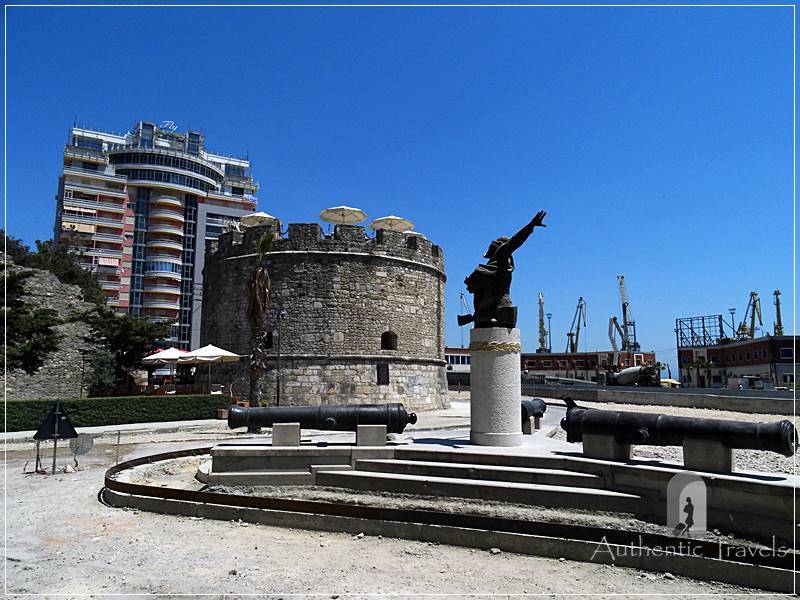
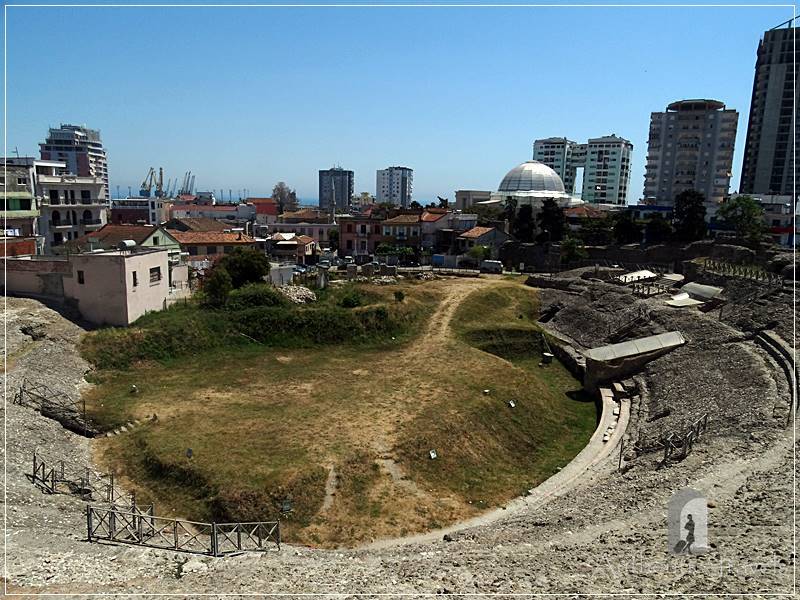
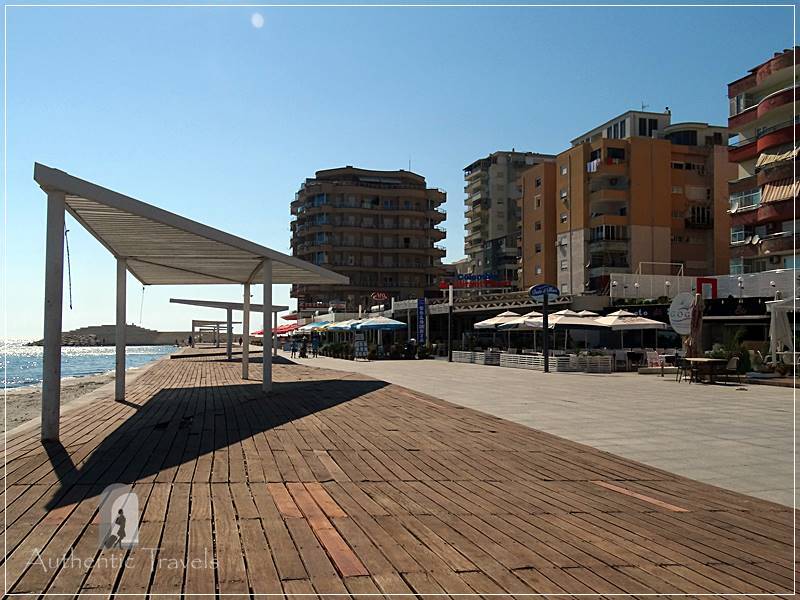
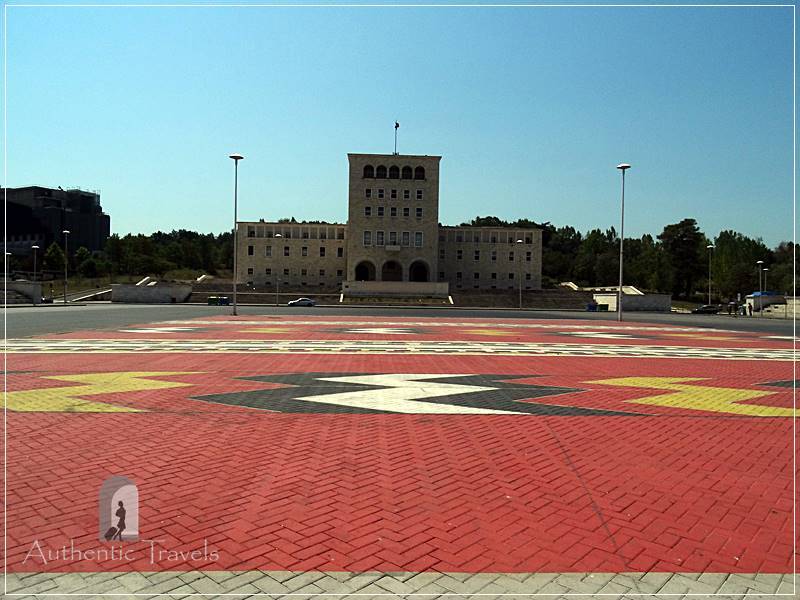
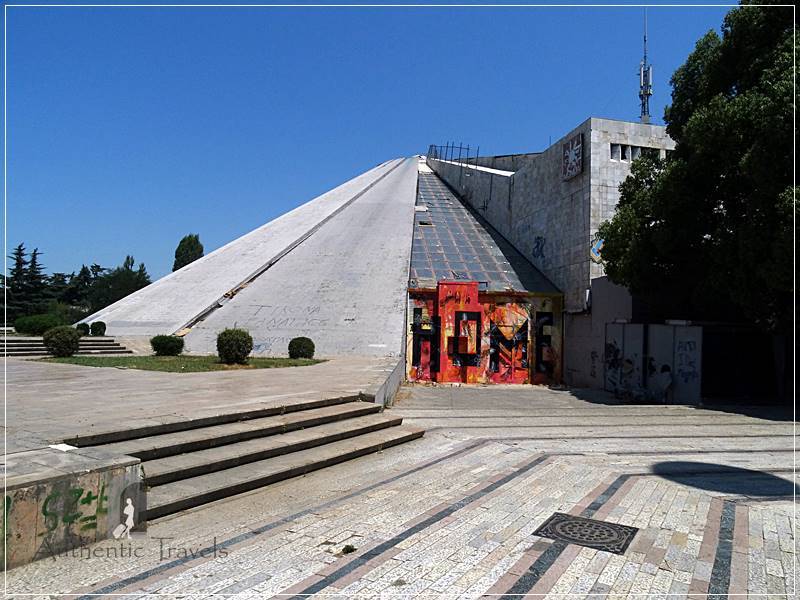
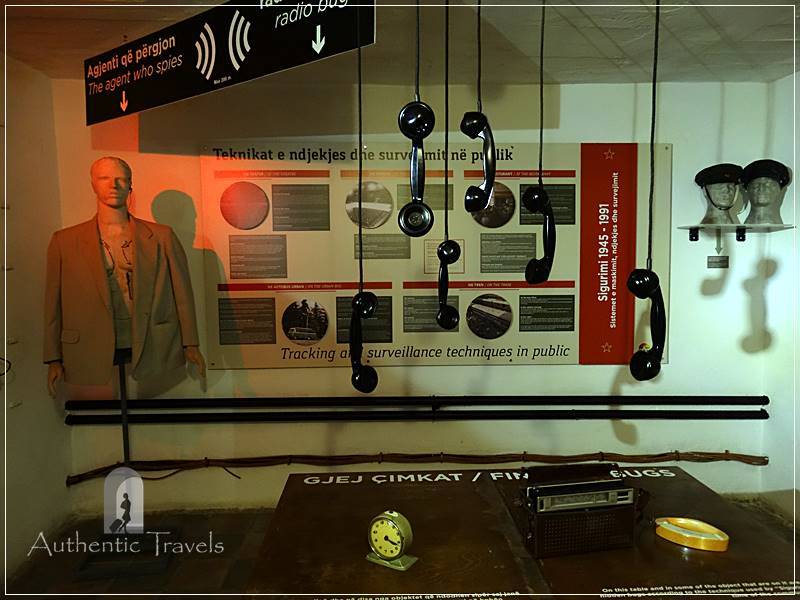
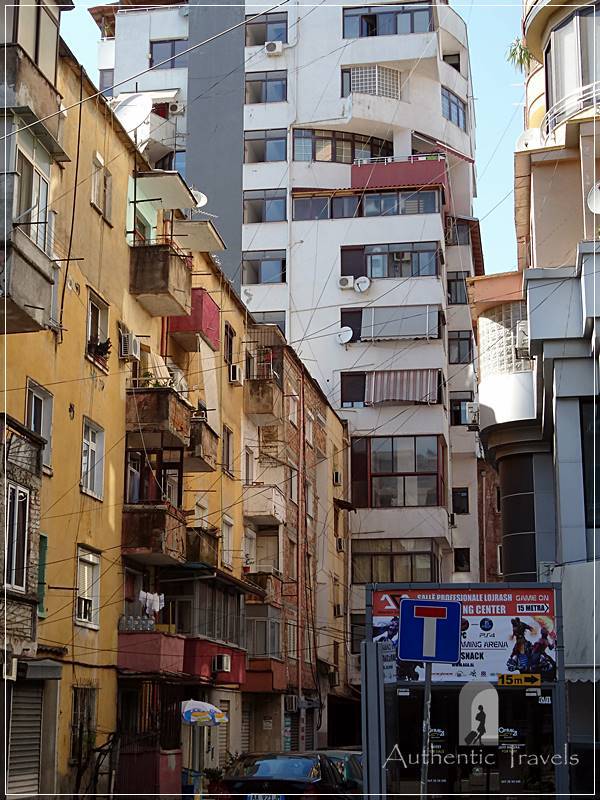
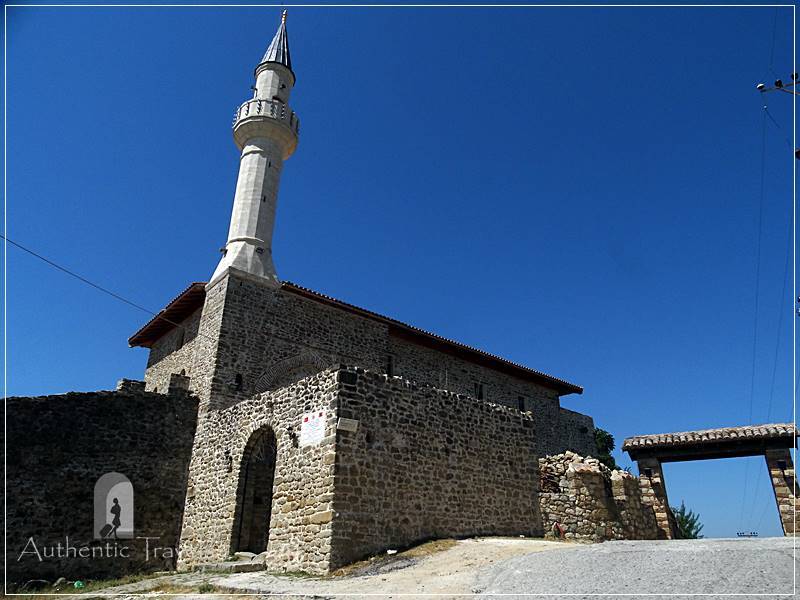
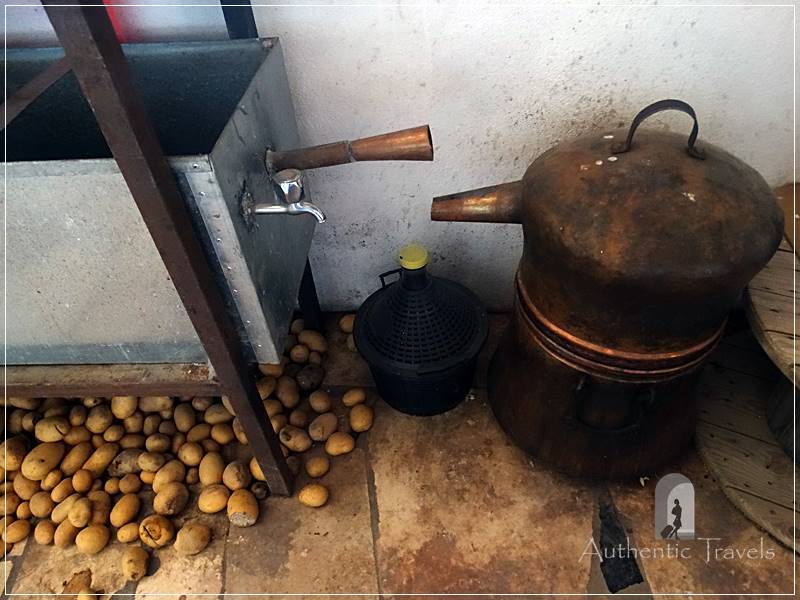
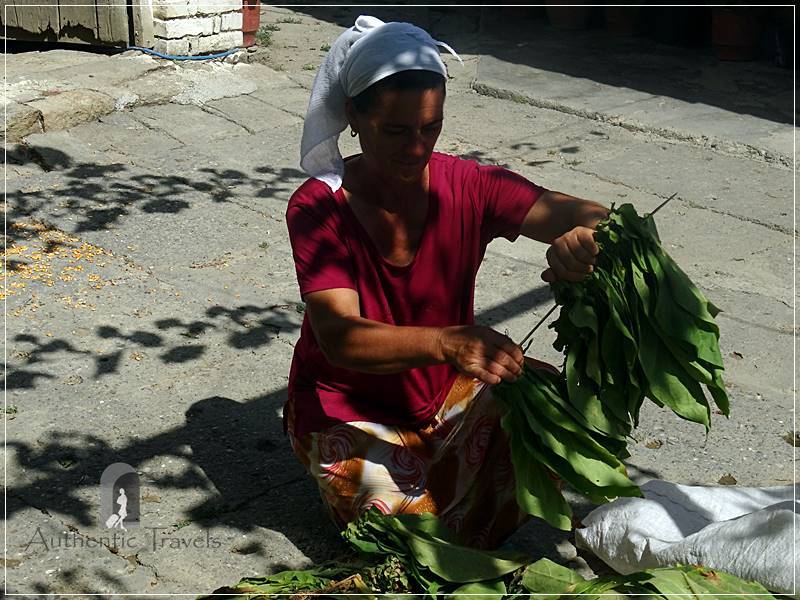
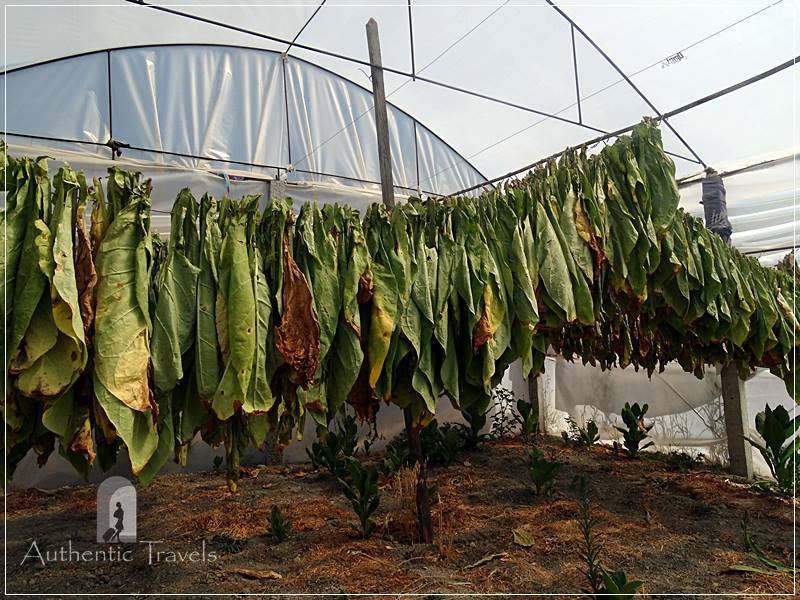
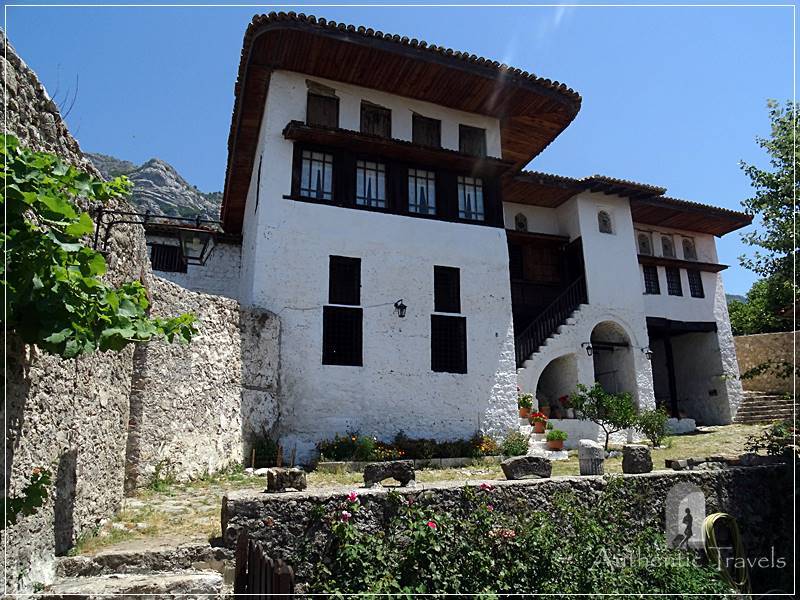
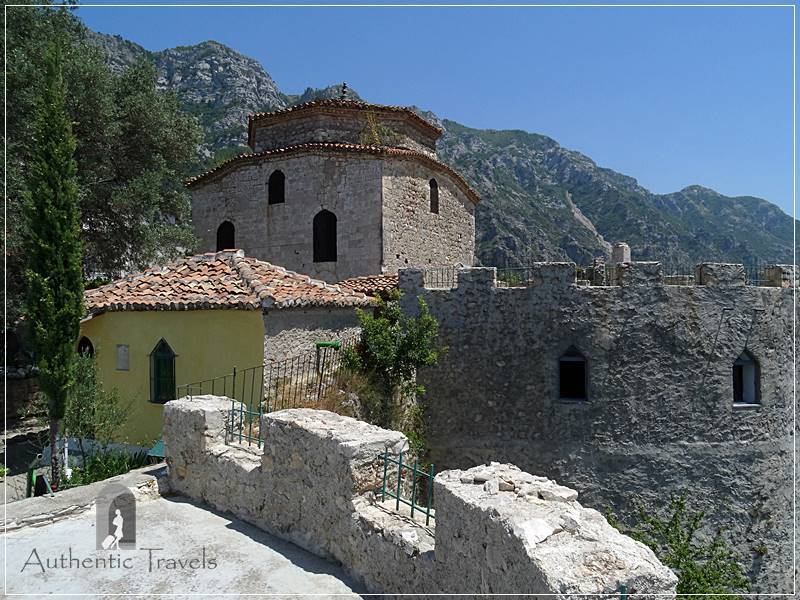
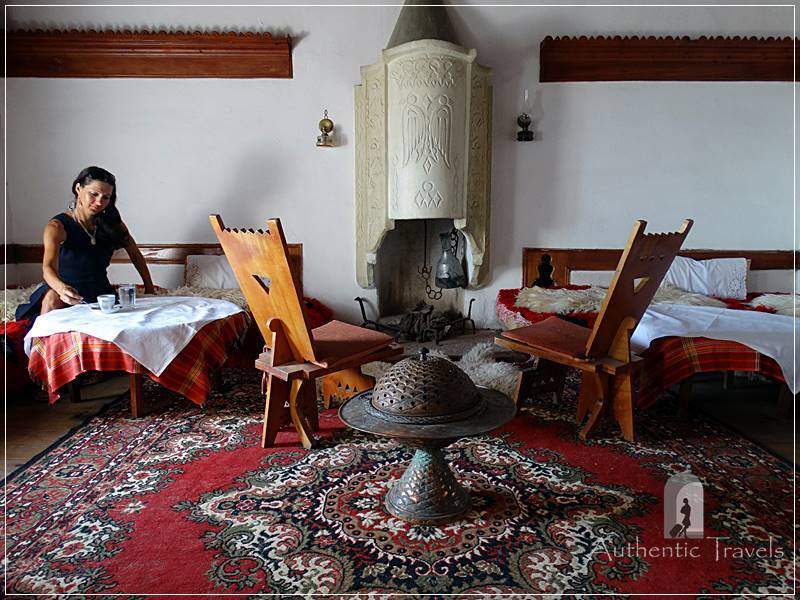
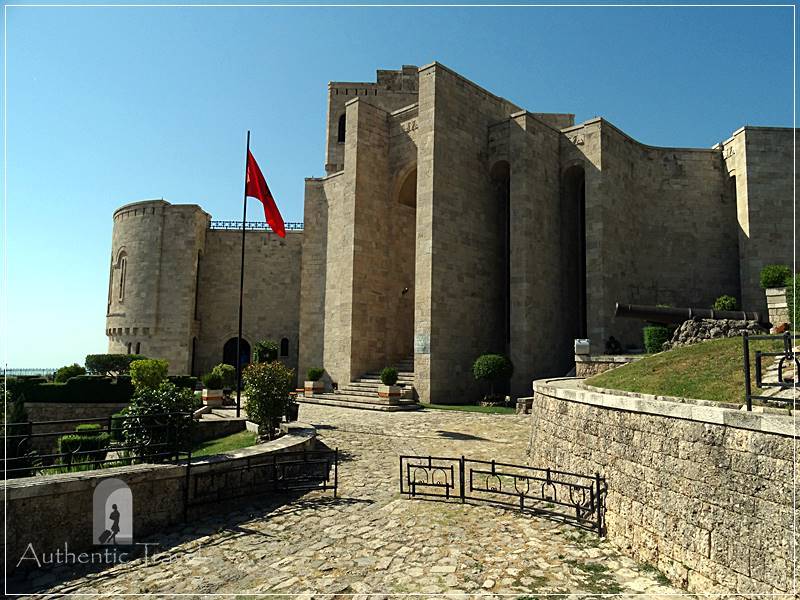

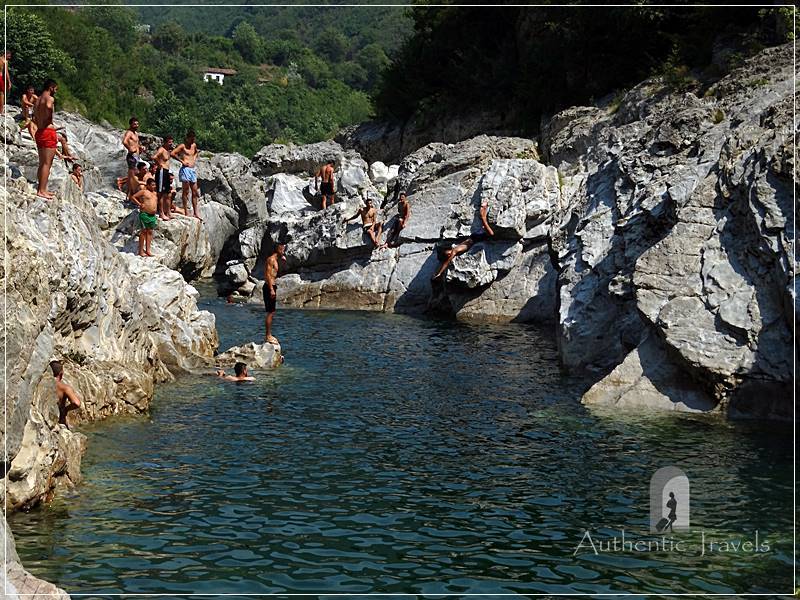

Albania is a country that I hope to visit soon. I’ve seen that it also has lots of beautiful beaches and attractions. Your tips could be ver useful in organizing the trip 🙂
I loved this post! You seem to had an authentic experience and saw a lot from Albania (coming from a local). Thank you for sharing this with the world.
Well, That’s what I know to do best. Catch the moments with locals. 😉
Wow, I always wanted visit Albania. Which month you recommend to visit? I heard that is busy during summer..
It depends where you go. In summer is hot and busy. In autumn maybe is less hot and less crowded, indeed.
Sounds like there are a lot of unique and interesting adventures to do there!
Honestly, Albania is a country I hardly know anything about. I’d heard of Tirana but that was the extent of it. I really enjoyed reading about your experience and would love to go and swim in the Kiri Canyons one day! I’m also astounded at how well preserved Mesi Bridge – that photo is beautiful!
Ooh how was the souvlaki? I love souvlaki and sounds like you could’ve had a very authentic version of it considering where you were. Let me know! Thanks.
The souvlaki was good considering that I was very hungry.
I knew very little about Albania- thank you for the informative post!! The Merlika Guesthouse looks amazing!
It was incredible that I found a great, stylish, and modern guesthouse at a better price than at the municipal campground. Isn’t that funny?
Wow it sounds like they are really big on coffee there. And i can’t believe you drove there! I think I would’ve just found a driver after the first day. Thanks for sharing this experience with us.
Tirana is the city of 3000 cafes. During my one-month trip to Albania I fell in love with frappe and coffee.
This is another authentic travels of yours. I haven’t been to any of the places you’ve mentioned above and all the scenery are truly amazing. I never thought that Albania can be really this interesting and it has so much to offer. The line of palm trees that have peacefully flanked at the main seafront were seemed to be an interesting sight to behold and enjoy while enjoying the sea breeze. I would definitely go to visit the Amphitheater cause it looks really amazing and it has rich history to offer. I was also stunned about the Tobacco leaves hanging for drying, it looks amazing.
All the countries in this world have something special to offer. It is just us that have misconceptions that it doesn’t worth. Once we let this conceptions go, we find a totally different world, full of surprises.
I can’t imagine how good it must have felt to finally stay in a house after a month of other accommodations. I do so much house sitting precisely because I’m a wimp about hostels and camping. The bridge and the museum of Communism both look amazing — I’m noting this down for my trip to Albania in 2020.
I have never been but would love to visit some day. It looks and sounds like a beautiful country. When I was reading about your dentist expereince, I think I would have been exhausted to not be able to get my teeth fixed at one location and having to switch locations. I am terrifed of dental work, so that may be the reason why I would just want to get it over with in one session 🙂